Carlo Mollino is the most eccentric figure in Italian design. He amazed not only with his incredible furniture shapes, but also with the way he created his designs and even with his very way of life.
He was compared to Salvador Dali in terms of design: Mollino cultivated his unusual appearance with a thick black moustache and the theatrically grim gaze of an operetta villain. The conditions under which Mollino worked with his furniture makers are well-known: they were only allowed to work at weekends at night, so that no one could complete his most important design, the Genius three-legged chair. Carlo Mollino designed this famous object in 1950.
A perfectionist in the details of the style and quality of the furniture he created, he did not regard design as a profession, considering it a way of life, a path to self-realisation and a manifestation of his own creative energy.
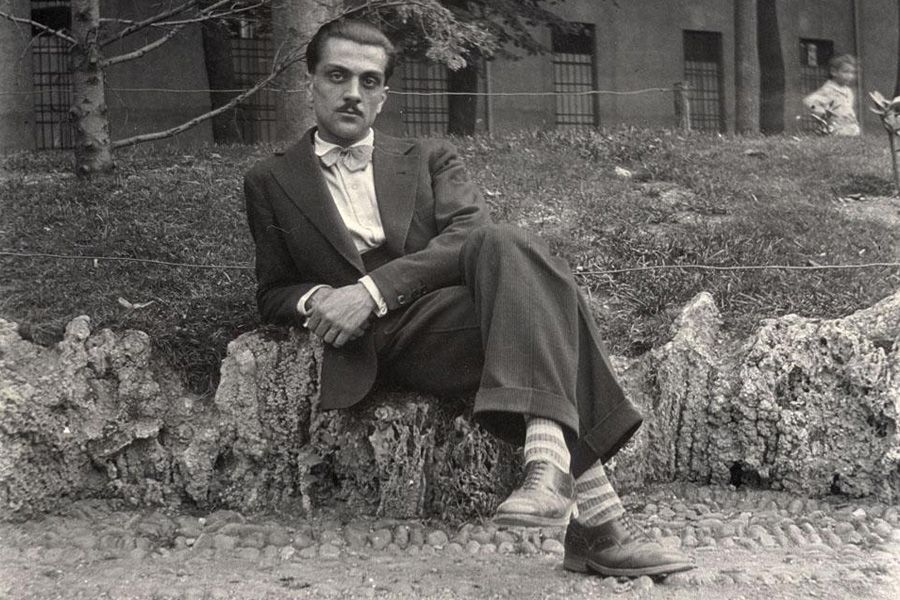
Carlo Mollino 6.05.1905 – 27.08.1973
Carlo Mollino was born in Turin in 1905 into the family of the architect Eugenio Mollino. He received his architectural education at the University of Turin. Like most creative young people of the time, Carlo enrolled at the Turin Polytechnic in the then fashionable engineering faculty. But just one year later, in 1929, he changed his technical speciality to a passion for art and attended art history courses in Ghent. Nevertheless, in order to start working in his father’s atelier, he graduated as an architect in 1931. Two years later, he won a major professional competition to design the headquarters of the Agricultural Federation in Cuneo (Italy), and in 1937 he had the headquarters of the Società Ippica (Turin Equestrian Association) built to his design. Today this building is almost textbook and is considered the most striking example of Italian Futurism in architecture. This style attracted Mollino the designer the most, even against the general tendency to worship rationalism.
His first experiments with Futurism were carried out in his own home Casa Miller, where he set up his own photographic studio. During this period, his interiors are characterised by distinctive techniques such as the use of draped fabrics as room dividers and elegant upholstery, especially in velvet. By 1938, he was already receiving commissions for private and public interiors. His portfolio includes works such as Casa Devalle, Casa Minola, Casa Orengo, Casa Editrice Lattes – for each of these interiors Carlo Mollino designed original furniture, marking the beginning of the biomorphic aesthetic in global object design.
From the 1940s and throughout the 1950s, he preached his design religion in a variety of fields: industrial design, furniture, interiors, exhibition design, scenography, modelling women’s shoes, designing aircraft and racing cars and cable cars. Mollino’s work has been called ‘Turin Baroque’ and ‘aerodynamic surrealism’, drawing on the most current trends of his time – aeronautics, engineering invention, the organic forms of Art Nouveau, Surrealism and Expressionism, and the emergence of innovative materials and technologies in industry. Glass, steel, bent plywood, sponge rubber, which he was the first to use for upholstered furniture, all formed the basis for shaping Mollino’s legendary furniture.
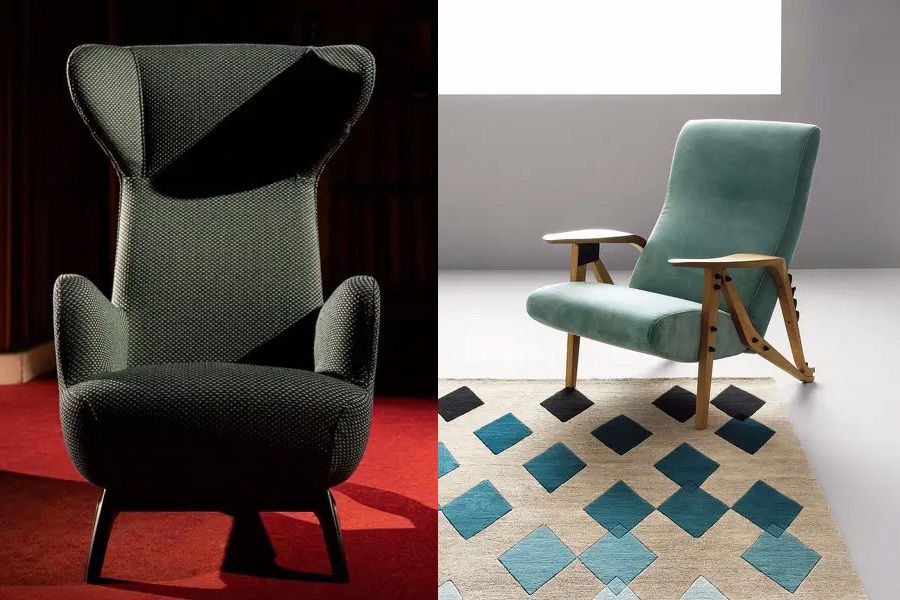
‘Ardea’ armchair 1944. Manufactured by Zanotta in 1994. Armchair ‘Gilda’ 1954 Manufactured by: Zanotta
“Had he stayed in Milan after the polytechnic and started working for the big factories, he would have had the chance to catch on with modernism and join the design boom of the 1940s and 1950s,” says Fulvio Ferrari. – But his stubbornness and the large fortune his father left him allowed him to choose his own path. So Mollino returned to Turin and began creating anthropomorphic armchairs and lamps, worshipping Gaudi and celebrating Art Nouveau.
One of the most famous pieces of furniture designed by Carlo Mollino is the Gaudi chair, dedicated to the great architect. Today, many studios are keen to create reproductions of the Gaudi chair, and Mollino originally designed a collection of these chairs in 1949 for the interiors of Casa Orengo. This model epitomised all of Mollino’s passion for biomorphic forms – the fluidity of the lines is emphasised by the perfectly smooth treatment of the pulling surfaces, the warmth of the wood and its colour completing the natural look. The striking softness of the wood’s lines is eye-catching, and the ergonomics of the shapes are fully in tune with the shape of the body.
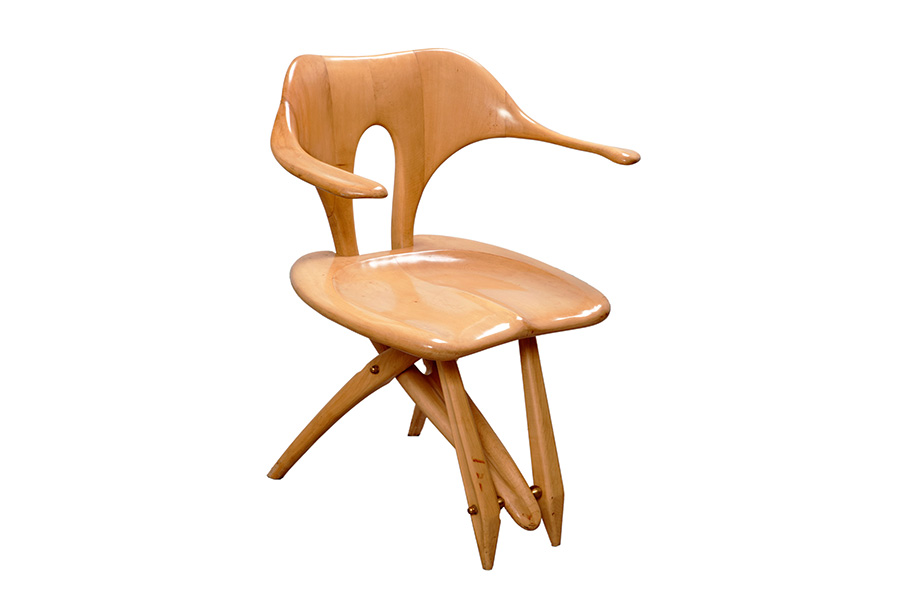
The ‘Gaudí’ armchair
The same style that designer Mollino followed for several years in his experiments also applies to the narrow-back chair. Karl designed it exclusively for his own office at the Polytechnic University of Turin in 1959. It is no coincidence that walnut was chosen for the collection: it is the wood that lends itself best to polishing. The delicate lines and form of the backrest, made up of two halves, and the delicacy of the stool’s legs are harmoniously complemented by the gloss of the perfectly finished surfaces.
Molino chose to combine polished elements with other materials of contrasting textures. For the Gaudi chair variant, for example, he proposes upholstery in matt leather. The footstool and armchair set was an extremely progressive piece of furniture for its time. Designed and produced in 1947 for Casa Orengo interiors, it is a combination of historical references and contemporary design trends. The well-known Voltaire armchair in Mollino’s design has an aerodynamic feature – the slope of the entire structure resembles a racing car, and the massive armrests resemble car doors. The grey plush-covered armchair is an obvious replica of the past, symbolising luxury, but at the same time grey is the colour of fashionable space metal.
In the late 1940s, Carlo Mollino was actively creating futuristic furniture designs using wood and glass. He chose glass and wood as the main objects for his experiments. By this time, he had replaced solid wood with bent plywood, which gives his designs an aerodynamic feel. The solidity of the seats and backs is now accentuated by the gracefully curved lines of the armrests and legs.
The last Italian futurist, Mollino saw in new technology and innovative techniques a unique opportunity to implement his fantastic and sometimes even delusional ideas into design. All this was natural and peculiar to post-war Italy; the phenomenon of technological fantasy – Italian Spazialism – was vibrantly developing in the country’s art. The 1948 manifesto of this movement declared: “We reject the view that science and art are different things. Artists precede scientific discoveries. Scientific discoveries in turn provoke artistic discoveries. Following the example of the Futurists, design and spatial arts find ‘artists’ means of expression’ in new technical developments. Furniture design in this period makes use of new technologies resulting from scientific advances. Carlo Mollino, for example, transferred contemporary advances in science and technology to the exterior of his furniture ideas.
The Reale table was revolutionary for its time (the author himself called it the ‘Pride of Mollino’) – its visually open structure is at the same time a decorative solution: a wooden footboard, composed of several elements, covers a transparent glass top. The wood was chosen by the authors with the simplest texture, and the accent is the construction itself, reminiscent of Leonardo da Vinci’s designs. Some experts compare it to a grasshopper, supporting the idea of Mollino’s biomorphic work, others see the object as a workbench and speak of a revival of craftsmanship in machine production, while others see the constructivism of the design pioneers of the 1920s.
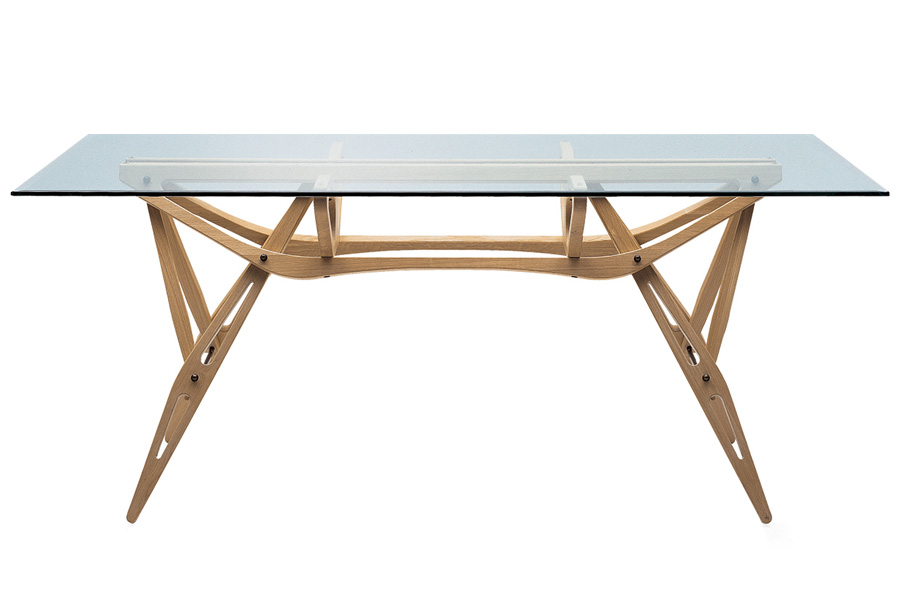
The Reale table
In 1946, Carlo Mollino created another table design with a cubist structure. Powerful solids arranged in different planes, a composition based on contrasting relationships between the parts, and a material base again consisting of plywood and a glass top element. This model was a stepping stone to his best work, the Cavour table.
In 1949, Mollino designed his most famous table, which harmoniously combines the statics of Italian Cubism and the bold movement of the aerodynamic style. In it, the graphicness of the lines, the rigidity and solidity of the base and the direct organic nature of the painting only become suggested more clearly. The material takes on a decorative effect: the light texture of the pale wood is now accentuated by the horizontal partitions of the drawers.
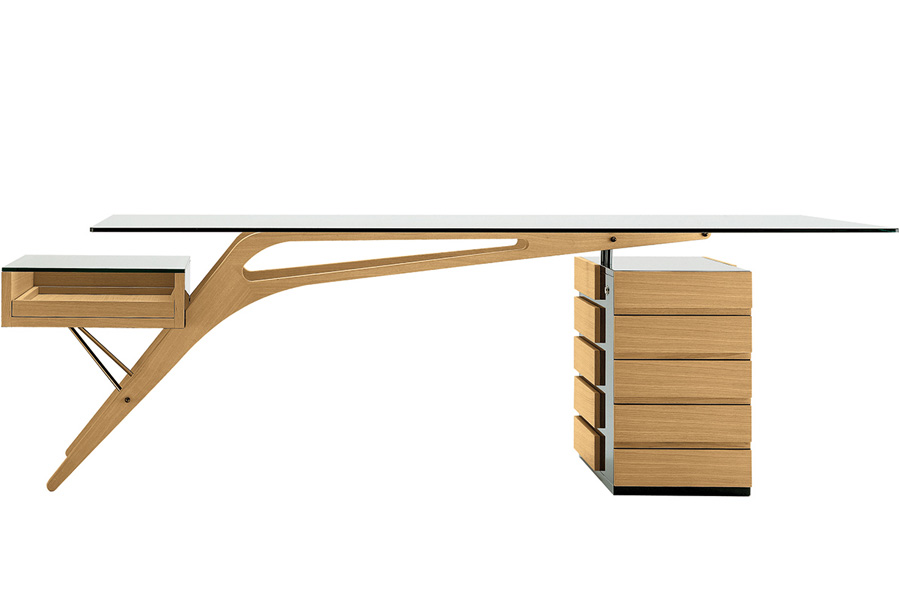
‘Cavour’ writing desk. 1949
With the beginning of the second half of the 20th century, attitudes to design changed dramatically, and the need to quickly saturate the market with mass-produced product came to the fore. The romanticism of creative exploration and an artistic attitude to aesthetics remained in Mollino’s collections in the last decade. He could not work under such conditions and left to become a teacher – he headed the chair of composition and architectural decoration at the University of Turin.
It was only in the 1970s, after Carlo Mollino’s death, that he was rediscovered by a new generation of designers trying to trace the roots of authentic Italian style. The name of the ‘Italian Gaudi’ reaches a level of popularity that he did not know during his lifetime: books and albums, scholarly articles and monographs on his work in the fields of furniture and car design, architecture and photography are published in succession, and a textbook by him on the technique of photographic art is published. In 1989, he opened a solo exhibition of Carlo Mollino’s work at the Centre Beaubourg in Paris, which was hailed as an exhibition comparable to that of Salvador Dali. The leading Italian furniture brand launches a collection of six pieces: three tables (Arabesco, Reale, Cavour), Ardea and Gilda armchairs and the Milo silhouette mirror.
Today, both new products launched by contemporary companies and those left behind in interiors created by Mollino are highly prized by design collectors. One exotica lover bought a desk from the Casa Orengo showroom at Christie’s in 2005 for US$3.8 million and, according to Fulvio Ferrari, the designer’s scholarly biographer, wasted the money: “Mollino’s furniture are not bricks from which one can create any interior, they are rather pieces of a jigsaw puzzle that work perfectly in the one room for which they were created.
Text: © Ksenia Bandorina, PhD in art history, associate professor at the A.L. Stieglitz State Academy of Art and Industry. 2020
Source: St. Petersburg Designers’ Association
Title photo – Casati